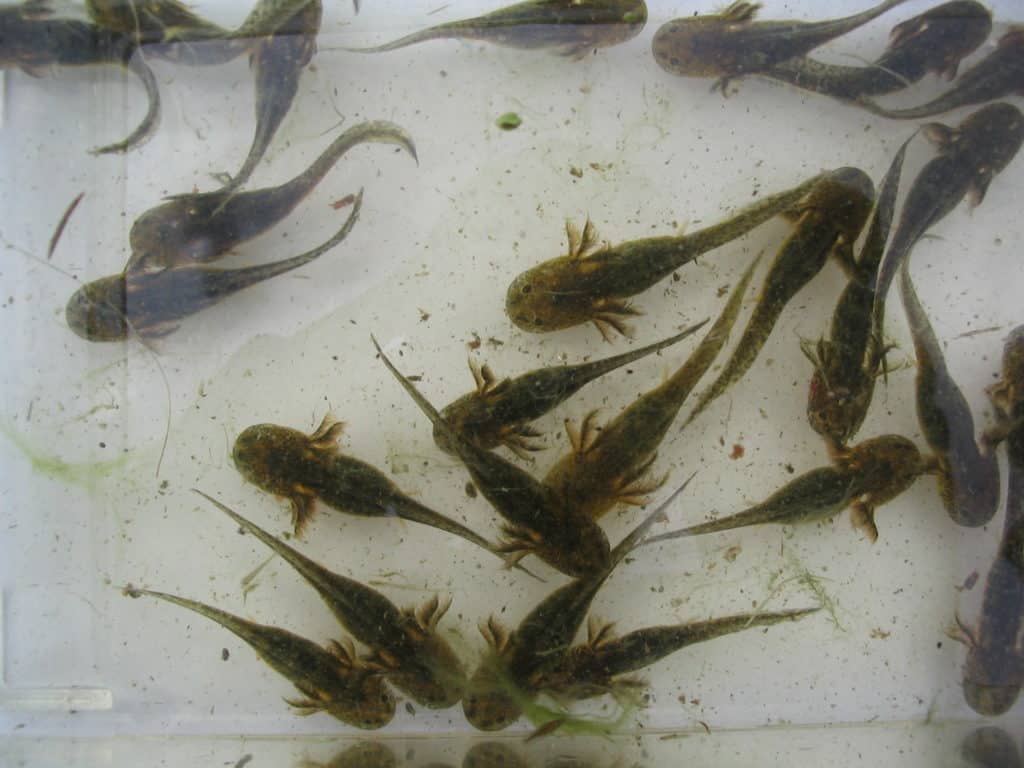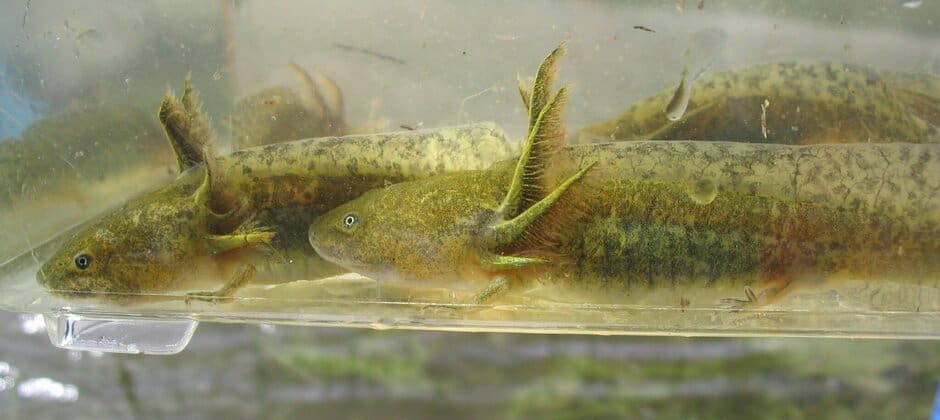Share this article
Young tiger salamanders decline despite protection
The California tiger salamanders of Sonoma County continue to decline despite well-intentioned efforts to preserve areas for the amphibians.
The distinct population segment of California tiger salamanders is unlikely to persist until more attention is paid to preserving networks of pools resilient to weather fluctuations rather than single vernal pools, researchers say.
Arianne Messerman, a postdoctoral associate in biology at the University of Miami, tapped into a long-term amphibian survey organized by her colleague David Cook in central California to determine how the salamanders were faring. They and their colleagues published their findings recently in Biological Conservation.
The team surveyed the distinct population segment of California tiger salamanders (Ambystoma californiense) from 2002 to 2020 in 118 vernal pools found in eight protected preserves. Every year in March, they dropped nets into different parts of the pools to capture salamander larvae and record the density.
“To my knowledge it’s one of the largest larval salamander data sets both in terms of spatial extent and temporal extent,” Messerman said.
This population of salamanders is considered endangered by the U.S. Fish and Wildlife Service due largely to habitat loss from urbanization, agriculture and other development causing habitat degradation and fragmentation.

Larval density has declined, even after despite long-term protection on designated preserves. Credit: David Cook
The data showed that salamander larval densities across the preserves dropped by 48% in more than 19 years. “That was pretty alarming,” Messerman said.
Larval density decreased in nearly all of the eight preserves. The preserve where larval salamanders didn’t decline was one where a state wildlife manager reintroduced larvae to a single pool in 1996 and adult tiger salamanders in 2004.
Habitat loss and degradation are likely leading to these declines, limiting connectivity between pools. Climate change also plays a role, increasing the unpredictability of rainfall during the wet seasons over the winter months. This can be a problem for these salamanders, as they return to the seasonally wet vernal pools where they hatched to breed in the winter.
“These animals are going to have to deal with ponds that are drying inconsistently,” Messerman said.
Population levels of the amphibians are subject to natural variation year-by-year, and vernal pools are also unpredictable. Normally these ponds are only seasonal, existing in the wet season and drying up during the summer, and some ponds don’t appear every year.
The data showed that ponds that held water longer following breeding seasons tended to have lower rates of larval decline over the course of the 19-year study. That gave the salamanders more time to metamorphose and set out to colonize the rodent burrows and other underground refuges where they spend most of their adult lives.
Some other areas that seemed to do better, Messerman said, were those that had a number of neighboring vernal pools nearby. While most salamanders return to the pools where they hatched, some disperse to other ponds close by. A network of neighboring pools can provide resiliency to these tiger salamanders as some will move to new ponds, revitalizing or recolonizing struggling or extirpated populations there. The data showed, in fact, that the populations of larvae in the preserves that only had one pool became extirpated by the end of the study period.
As a result, the protection of relatively unconnected preserves—especially when they’re surrounded by roads or other barriers—likely isn’t enough to conserve the Sonoma County population segment of California tiger salamanders, the researchers found.
Messerman noted that it’s still important to protect these areas, though. “Though evidently insufficient on their own, such actions represent critical steps toward ensuring the future of Sonoma County California tiger salamanders,” she said.
She also noted that the information the team found from this dataset may also apply to other distinct population segments of California tiger salamanders, and possibly to other amphibian species.
Header Image: Larval California tiger salamanders from Sonoma County. Credit: David Cook








